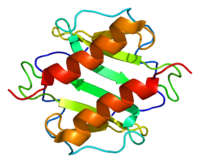
Immunomodulatory effect of Linalool (Lin) against CCl4‐induced hepatotoxicity and oxidative damage in rats
Sign Up to like & getrecommendations! Published in 2022 at "Biotechnology and Applied Biochemistry"
DOI: 10.1002/bab.2371
Abstract: The current study explored the hepatoprotective and immunomodulatory effects of Linalool (Lin) against carbon tetrachloride (CCl4)‐induced toxicity in mice. Four study groups (n = 8 each) were used: (1) a negative control group and (2)… read more here.
Keywords: ccl4; linalool lin; group; hepatotoxicity ... See more keywords

Hesperetin derivative decreases CCl4‐induced hepatic fibrosis by Ptch1‐dependent mechanisms
Sign Up to like & getrecommendations! Published in 2022 at "Journal of Biochemical and Molecular Toxicology"
DOI: 10.1002/jbt.23149
Abstract: Hepatic fibrosis (HF), a continuous wound‐healing response of the liver to repeated injuries, is characterized by abnormal extracellular matrix (ECM) accumulation. Hepatic stellate cells (HSCs) are considered a major cell type for ECM production. However,… read more here.
Keywords: hepatic fibrosis; hesperetin derivative; medicine; ccl4 induced ... See more keywords

MFGE8 protects against CCl4‐induced liver injury by reducing apoptosis and promoting proliferation of hepatocytes
Sign Up to like & getrecommendations! Published in 2019 at "Journal of Cellular Physiology"
DOI: 10.1002/jcp.28314
Abstract: Milk fat globule‐EGF factor 8 (MFGE8) has been reported to play various roles in acute injury and inflammation response. However, the role of MFGE8 in liver injury is poorly investigated. The present research was designed… read more here.
Keywords: induced liver; expression; mfge8; ccl4 induced ... See more keywords

Antioxidant and Antiapoptotic Polyphenols from Green Tea Extract Ameliorate CCl4-Induced Acute Liver Injury in Mice
Sign Up to like & getrecommendations! Published in 2019 at "Chinese Journal of Integrative Medicine"
DOI: 10.1007/s11655-019-3043-5
Abstract: To investigate the phenolic composition, antioxidant properties, and hepatoprotective mechanisms of polyphenols from green tea extract (GTP) in carbon tetrachloride (CCl4)-induced acute liver injury mouse model. High-performance liquid chromatography was used to analyze the chemical… read more here.
Keywords: polyphenols green; acute liver; ccl4 induced; ccl4 ... See more keywords

Chemical characteristics, antioxidant capacities and hepatoprotection of polysaccharides from pomegranate peel.
Sign Up to like & getrecommendations! Published in 2018 at "Carbohydrate polymers"
DOI: 10.1016/j.carbpol.2018.09.013
Abstract: This proposed work aimed to investigate the chemical characteristic, antioxidant capacities and hepatoprotection effect of pomegranate peel polysaccharides (PPP) on CCl4-induced oxidative damage in mice. PPP was identified as the acidic heteropolysaccharides by HPLC methods.… read more here.
Keywords: antioxidant capacities; ppp; pomegranate peel; ccl4 induced ... See more keywords

Structural characterization and amelioration of sulfated polysaccharides from Ganoderma applanatum residue against CCl4-induced hepatotoxicity.
Sign Up to like & getrecommendations! Published in 2021 at "International immunopharmacology"
DOI: 10.1016/j.intimp.2021.107554
Abstract: Natural polysaccharides and their derivatives have attracted academic attention due to their extensive physiological activities. However, the hepatoprotective effects against carbon tetrachloride (CCl4) toxicity have not been well elucidated. The objectives of this study were… read more here.
Keywords: applanatum residue; ganoderma applanatum; ccl4 induced; ccl4 ... See more keywords

Evaluation of biological activities and in vivo amelioration of CCl4 induced toxicity in lung and kidney with Abutilon pannosum (G.Forst.) Schltdl. in rat.
Sign Up to like & getrecommendations! Published in 2019 at "Journal of ethnopharmacology"
DOI: 10.1016/j.jep.2019.112395
Abstract: ETHNOPHARMACOLOGICAL RELEVANCE Abutilon pannosum is used in Pakistan for bladder inflammation, diuretic, lung disorders, diabetes and in lowering pyrexia. METHODS Amount of total phenolic content, total flavonoid content and HPLC analysis of APM for the… read more here.
Keywords: ccl4 induced; lung kidney; ccl4; rat ... See more keywords

Targeting cIAPs attenuates CCl4-induced liver fibrosis by increasing MMP9 expression derived from neutrophils.
Sign Up to like & getrecommendations! Published in 2021 at "Life sciences"
DOI: 10.1016/j.lfs.2021.120235
Abstract: AIMS Liver fibrosis is a growing public health concern without effective medical treatment. Recent reports have indicated that inhibitors of apoptosis proteins (IAPs) were potential targets for idiopathic pulmonary fibrosis therapy. However, their roles have… read more here.
Keywords: ccl4 induced; expression; apg 1387; liver fibrosis ... See more keywords

In vivo protective effect of Rosmarinus officinalis oil against carbon tetrachloride (CCl4)-induced hepatotoxicity in rats
Sign Up to like & getrecommendations! Published in 2019 at "PharmaNutrition"
DOI: 10.1016/j.phanu.2019.100151
Abstract: Abstract Exposure to environmental pollutants such as carbon tetrachloride (CCl4) causes liver injuries. There are claims that extracts from Rosmarinus officinalis protect from such injuries. This study aimed to explore the hepatoprotective effects of cold-pressed… read more here.
Keywords: ccl4 induced; rosmarinus officinalis; tetrachloride ccl4; carbon tetrachloride ... See more keywords

Supplementation with gamma oryzanol ameliorates CCl4-induced hepatic fibrosis in mice
Sign Up to like & getrecommendations! Published in 2019 at "PharmaNutrition"
DOI: 10.1016/j.phanu.2019.100169
Abstract: Abstract Carbon tetrachloride (CCl4) is a hepatotoxin used to induce the model of hepatic fibrosis in mice. The mechanism by which ccl4 causes hepatic fibrosis is via imbalance in antioxidant system, increase of inflammatory and… read more here.
Keywords: supplementation; fibrosis; ccl4 induced; mice ... See more keywords

Gigantol ameliorates CCl4-induced liver injury via preventing activation of JNK/cPLA2/12-LOX inflammatory pathway
Sign Up to like & getrecommendations! Published in 2020 at "Scientific Reports"
DOI: 10.1038/s41598-020-79400-0
Abstract: Arachidonic acid (AA) signaling pathway is an important constituent of inflammatory processes. In our previous study, it was found that dihydro-stilbene gigantol relieved hepatic inflammation in mice with CCl4-induced acute liver injury. This study aimed… read more here.
Keywords: liver injury; jnk; ccl4 induced; activation ... See more keywords